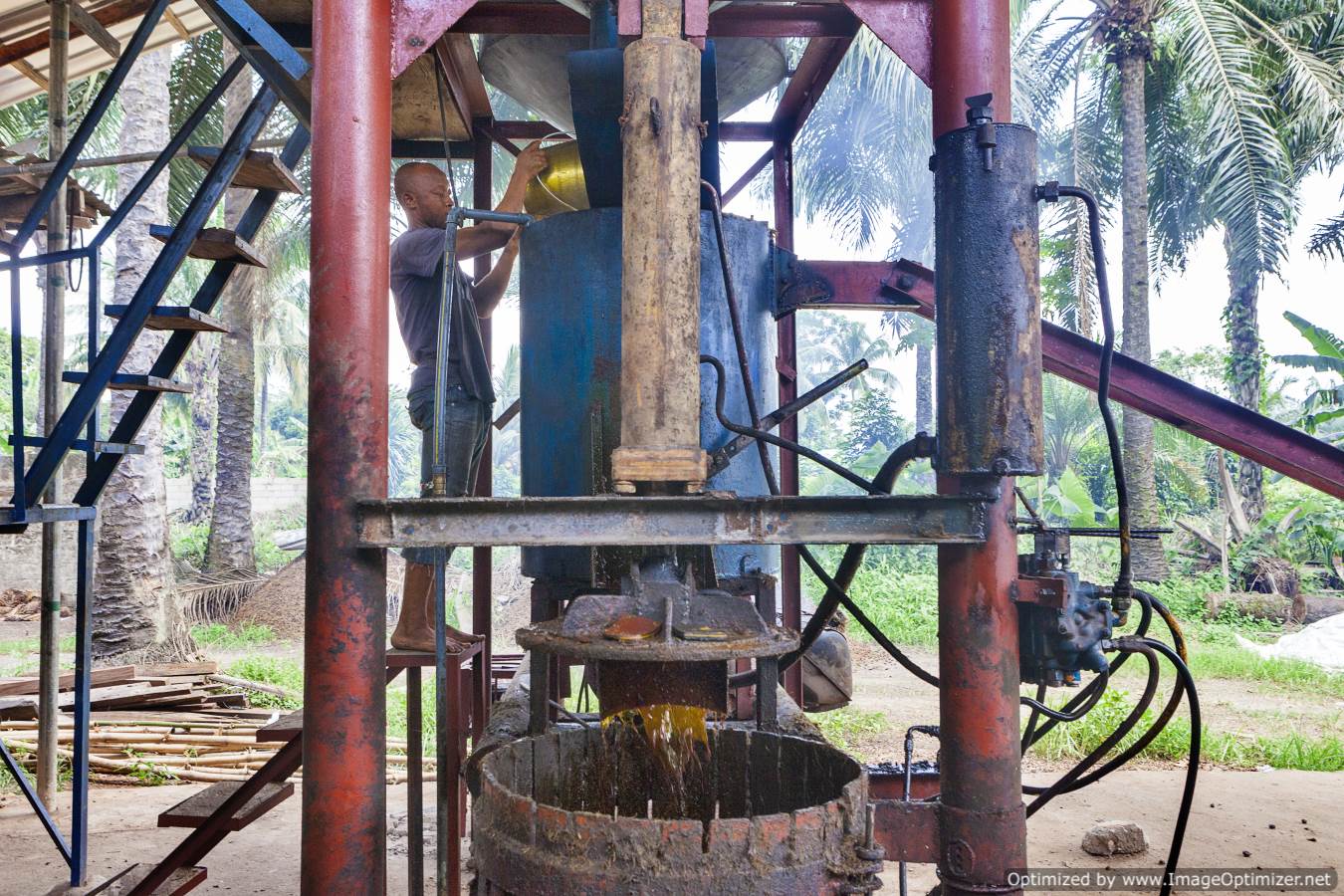From the field to the factory
Palm oil, one of the world’s most versatile and widely used vegetable oils, goes through an intricate journey before reaching consumers. From the field to the factory, every step must be carefully managed to ensure the final product is of the highest quality. Processing fresh fruit bunches (FFBs) quickly and efficiently is not just a matter of tradition — it’s essential to preserving the oil’s integrity and economic value.
The Urgency of Immediate Processing
Once oil palm fruits are harvested, the clock starts ticking. Fresh fruit bunches must be processed within 24 hours to avoid deterioration. Delays in processing lead to an increase in free fatty acids (FFA), which results in rancid oil with a lower market value and poorer taste.
This urgency has shaped the development of modern palm oil processing facilities, where speed, efficiency, and hygiene are top priorities.
Step 1: Sterilization — Halting Degradation
The first critical step in the milling process is sterilization. The harvested bunches are loaded into large pressure vessels known as sterilizers, where they are steamed at high temperatures (usually around 140°C to 145°C) for approximately 60 to 90 minutes.
Sterilization serves multiple purposes:
- Loosening the fruits from the bunches for easier separation.
- Killing harmful enzymes that would otherwise cause rapid oil spoilage.
- Softening the fruit flesh to facilitate oil extraction.
Sterilization not only protects the oil quality but also helps in preparing the material for the next steps in processing.
Step 2: Threshing — Separating the Fruits
After sterilization, the bunches are moved to a thresher, a rotating drum that separates the loose fruits from the bunch stalks. Efficient threshing ensures that as many fruits as possible are collected, minimizing waste.
The empty fruit bunches (EFB) are usually set aside and can be repurposed for mulching in plantations or used as biofuel in mills striving for zero-waste operations.
Step 3: Oil Extraction — Unlocking the Treasure
The separated fruits are transferred to a digester, where they are stirred and heated to break down the pulp. From there, the mashed fruit pulp is mechanically pressed using screw presses to extract the valuable crude palm oil (CPO).
The quality and quantity of oil extracted depend on the efficiency of this stage. Modern mills invest in high-efficiency presses to maximize oil recovery while minimizing the breakage of kernels, which could contaminate the oil.
Step 4: Clarification — Purifying the Oil
The extracted oil still contains water, dirt, and small fibers, so it undergoes a clarification process. This involves:
- Passing the oil mixture through settling tanks.
- Using centrifuges to separate impurities.
- Skimming off the clean oil for storage and further refining.
Proper clarification is crucial because any retained impurities can compromise oil stability, color, and flavor.
Step 5: Kernel Recovery — Nothing Goes to Waste
After pressing, the remaining fiber and nuts (kernels) are separated. The nuts are then cracked to release the palm kernels, which are processed separately to extract palm kernel oil — a different product with its own market demand in cosmetics, confectionery, and more.
The leftover shell and fiber are often burned to generate steam and energy for the mill, moving towards self-sustaining, environmentally friendly operations.
Modern vs. Traditional Processing: Efficiency Makes the Difference
Modern mills use automated, hygienic methods that ensure higher oil extraction rates, better oil quality, and minimal environmental footprint. These facilities often integrate:
- Automated sterilization and pressing systems
- Water recycling and energy-saving technologies
- Biogas capture from POME for energy generation
In contrast, traditional or small-scale processing often results in:
- Lower oil yields
- Higher impurity levels
- Greater environmental impact from untreated waste
Thus, modernization is not just about profits — it’s about meeting international quality standards and protecting ecosystems.
Environmental Responsibility: The New Frontier
As global consumers become more environmentally conscious, the palm oil industry faces increasing pressure to adopt sustainable practices. Managing Palm Oil Mill Effluent (POME) — a by-product of the extraction process — is one of the key environmental challenges.
Forward-thinking mills are investing in:
- Biogas plants to capture methane from POME.
- Zero-discharge systems that recycle water.
- Green energy solutions using palm biomass.
These practices not only reduce carbon emissions but also create new revenue streams and improve the industry’s image worldwide.
Conclusion: Every Step Counts
The path from field to factory is complex, involving biology, engineering, and environmental stewardship. Each stage — from harvesting to pressing, to clarifying — must be handled with precision to preserve oil quality and maximize output.
At OLPODEV, we believe that efficiency, sustainability, and innovation are the pillars of a strong future for the palm oil industry. By embracing modern practices, respecting the environment, and prioritizing quality, we can ensure that every bottle of palm oil represents the best of what our farms and mills have to offer.
From the friut to your table, every step matters.


